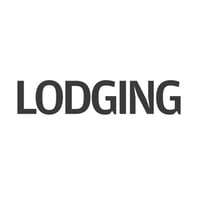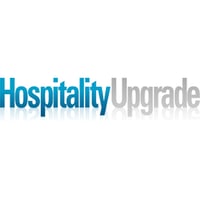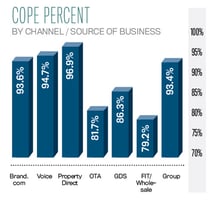By Mark Lommano
Published Articles
Striving for optimal: How to maximize revenue performance
By: Ankush Khullar
Hotels traditionally benchmark their performance against the RevPAR of their comp set. Using this method, they are incentivized to strive for an average rather than “optimal” performance. By focusing on top-line revenue, hotels are not maximizing net revenue, or the revenue they keep after deducting costs for guest acquisition.
One way to remedy these issues is to utilize a custom “optimal” target by determining the mix of business the property can realistically achieve in order to maximize their net revenue performance.
Based on actualized statistics, consider an upper upscale hotel located near San Jose, California (the “subject hotel”). The hotel’s comp set consists of the subject hotel and four nearby properties. In 2016, the subject hotel achieved a RevPAR of US$123.56, while its comp set achieved a RevPAR of US$146.28, resulting in a RGI (revenue generation index) of 84.5 for the subject hotel. In order to achieve a RGI of 100, the subject hotel would need to earn an additional US$1.7 million in top-line revenue. After accounting for the subject hotel’s sales, marketing and acquisition costs during 2016, using this method, the subject hotel would target to earn an additional US$1.6 million in net revenue. However, how it would earn the additional revenue is not clear.
Another approach
Now consider that instead of benchmarking against the average performance of its local competitors, the subject hotel benchmarks against a net revenue target based on the best, or optimal, business mix it can achieve with the demand in its market. The optimal business mix (OBM) is based on a combination of factors such as the historical business mix of the subject hotel, the historical business mix of its competitors and the average rates in the market during 2016. Using this method, the subject hotel would target to earn an additional US$4.3 million in net revenue. The OBM method would not only set a target for total revenue but also provide guidance for how to achieve that revenue by increasing or decreasing share of the demand through specific distribution channels.
Based on these results, a hotel can often sell itself short when benchmarking against the average performance of its competitors. In this case, the initial target set is approximately US$2.7 million less than it could be if OBM is utilized as the target as part of the benchmarking process. Although it may seem unrealistic for the subject hotel to earn an additional US$4.3 million in net revenue, the inputs to arrive at the OBM are based on actual rates and demand in its market, by business segment and the acquisition costs specific to the subject hotel. Therefore, although theoretical, the results are based entirely on actualized characteristics of the subject hotel’s market.




